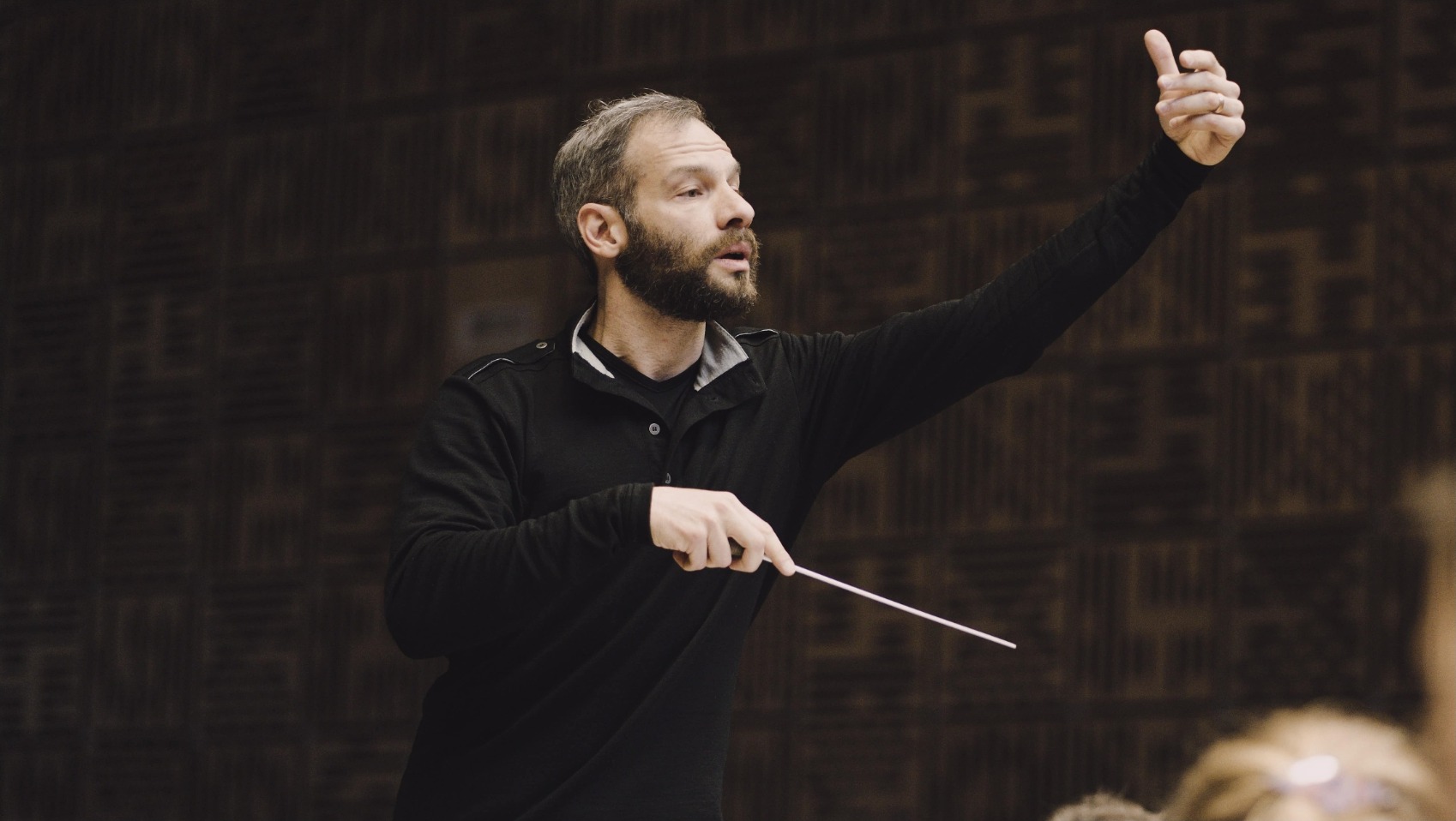All facets of the orchestra were showcased in the Seattle Symphony’s Thursday (March 14) concert of Sibelius and Nielsen. Violinist Ning Feng made his much-anticipated debut with the Sibelius violin concerto, and Finnish conductor Dima Slobodeniouk returned to the SSO, leasing a US premiere of a composition by a living Finnish composer.
“Stonework,” by Sebastian Fagerlund, gave a good preview of the night’s orchestral banquet. Inspired by stone monuments of every form and age, Fagerlund’s tone poem opened in a burst of frenetic movement, topped by trumpet lunges and thrusts. Amorphous as it first seemed, the orchestral mayhem began to cohere with a legible rhythmic pulse, and as the piece progressed , its static energy eventually settled into a discrete pattern of sound images.
Fagerlund sampled every conceivable combination of instruments, including tuned gongs, as the work eventually slowed to a taffy-pull version of its former self. After coming several times to an almost-frozen standstill, things again began to move, building steadily toward a thundering climax. Here the sound abruptly evaporated to a mere filament, like a march to a precipice over which one either plummets or soars. Slobodeniouk’s clear baton technique drew an assured performance from the orchestra, and certainly helped me parse the vicissitudes of this new work.
The violin concerto is another precipice over which one can either plummet or soar. Sibelius did not follow the convention of scaling back orchestral forces in deference to his soloist. Rather he scored it in a lower register when accompanying the violin and a higher register during orchestral tuttis. For this reason, the piece sounds like one of his granitic symphonies, albeit one with a virtuosic violin obbligato. And although it follows the formal arrangement of a concerto, the epic sweep of its scope and herculean demands on the soloist make it unique in the repertoire.
It quickly became clear that Ning Feng’s high international reputation is well deserved. He managed the frightening octaves that litter the score with seeming ease and played with a veteran’s idiomatic sense of style. Slobodeniouk proved an alert collaborator, keeping the reins on the orchestra, leading while following, and perhaps most difficult of all, sticking the last note of the first movement.
With his large orchestra, Sibelius could indulge in glowing effects like a horn chorale in the adagio, the heart of the concerto. Ning gave a charged account of the long, low melody of the first section — indeed, to my mind he laid it on a little thick at the end of the tune’s initial appearance, where the music should speak for itself. That aside, the emotional appeal of this movement and Ning’s obvious feeling for it were affecting.
The persistent rhythm and steady pedal that followed painted a restive canvas over which Ning showered musical fireworks – a regular crucible of every technical difficulty ever devised – building relentlessly toward the towering finale. Ning obliged the appreciative house with an encore, a lightly bowed reading of the Largo from Bach’s Violin Sonata #3 in C major.
Carl Nielsen gave his Fourth Symphony the title “Inextinguishable,” hoping the name might “suggest in one word what the music alone is capable of expressing to the full: the elemental Will to Life. Music is life and, like it, inextinguishable.”
Slobodeniouk led a well-proportioned reading of the symphony, choosing tempi that highlighted the internal logic of the score, from the vital opening to the folk tune-like main theme introduced by the clarinets. This is picked up by the rest of the orchestra, notably in the brass, the writing for which could have been lifted from Bruckner. These semi-modal blocks eventually coalesced into a cadence that would recur later in the work. Props to the first violins, which played as one instrument at the exposed transition to the second movement.
The Poco allegretto, a poised woodwind divertimento with a madrigal-like character, unfolds serenely in the eye of this symphonic hurricane. The third movement begins inauspiciously with a strange and serious conversation between the strings and timpani. After a few interrupted attempts at chorale building, first in the strings, then in the brass, Nielsen shows that even the least comely of themes can be turned towards life. Eventually this gives way to the energetic finale.
While Nielsen confessed to no overt martial theme for the work, one might be forgiven the inference given the fusillade of blows that volleyed between two sets of tympani toward its conclusion. This is violence followed by victory, music written at the outset of the Great War before its horrors were revealed. Slobodeniouk showed an excellent understanding of the finale’s architecture, in particular resisting the temptation to make a premature rallentando in the symphony’s final bars.
Discover more from Post Alley
Subscribe to get the latest posts sent to your email.

I agree that Feng has a lovely tone, but it felt like he borrowed someone else’s vision of the Sibelius, and this borrowing unraveled as he progressed through the piece. It was a bit of train wreck at the end.
My benchmark for the Sibelius is admittedly high: Hilary Hahn playing with Mikko Franck conducting Radio France (on YouTube.) Hahn always lets the music speak for itself, it’s her gift. In this regard, Feng is in the same company as Heifetz and Stern, whose virtuosic playing eclipses the beauty of the piece.